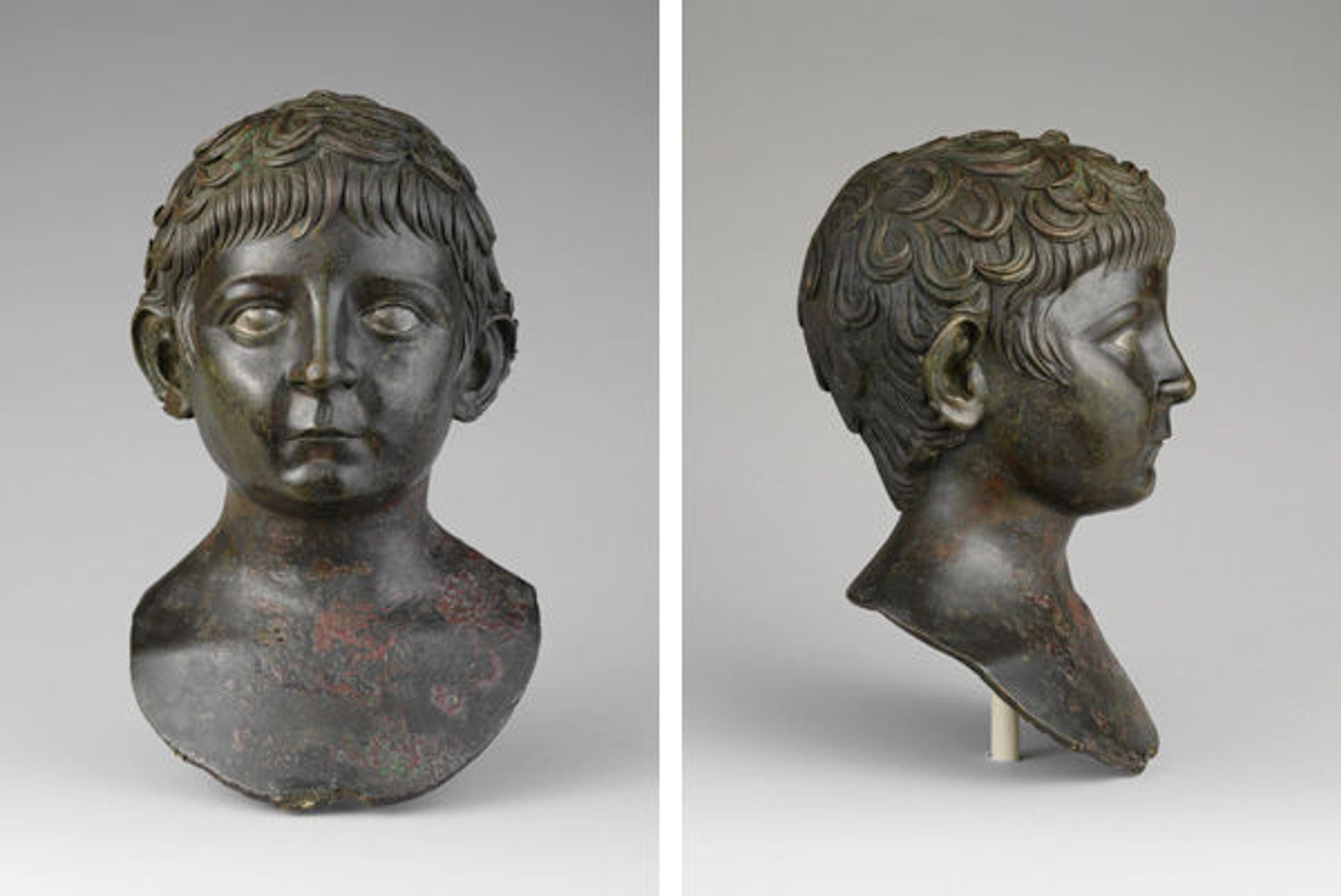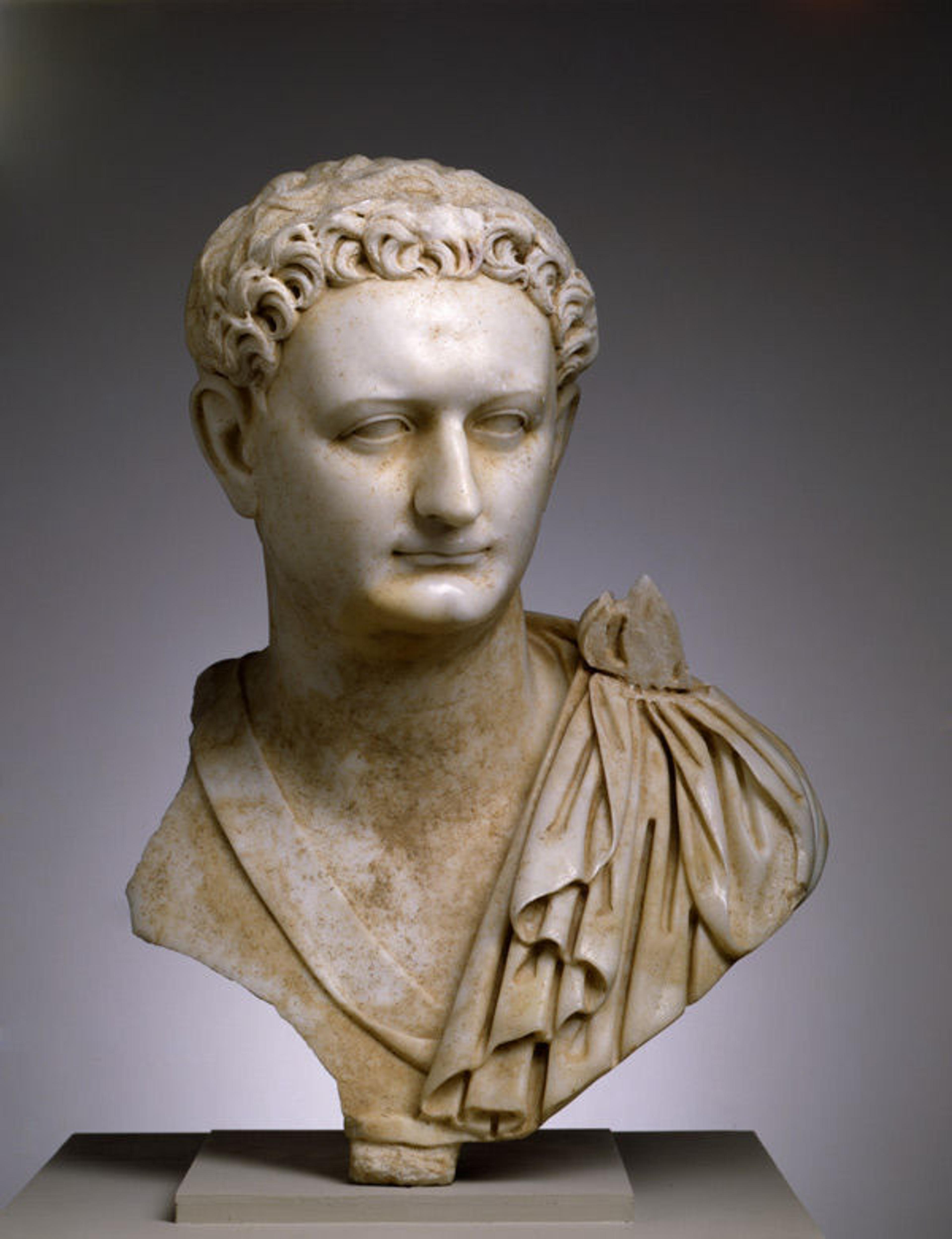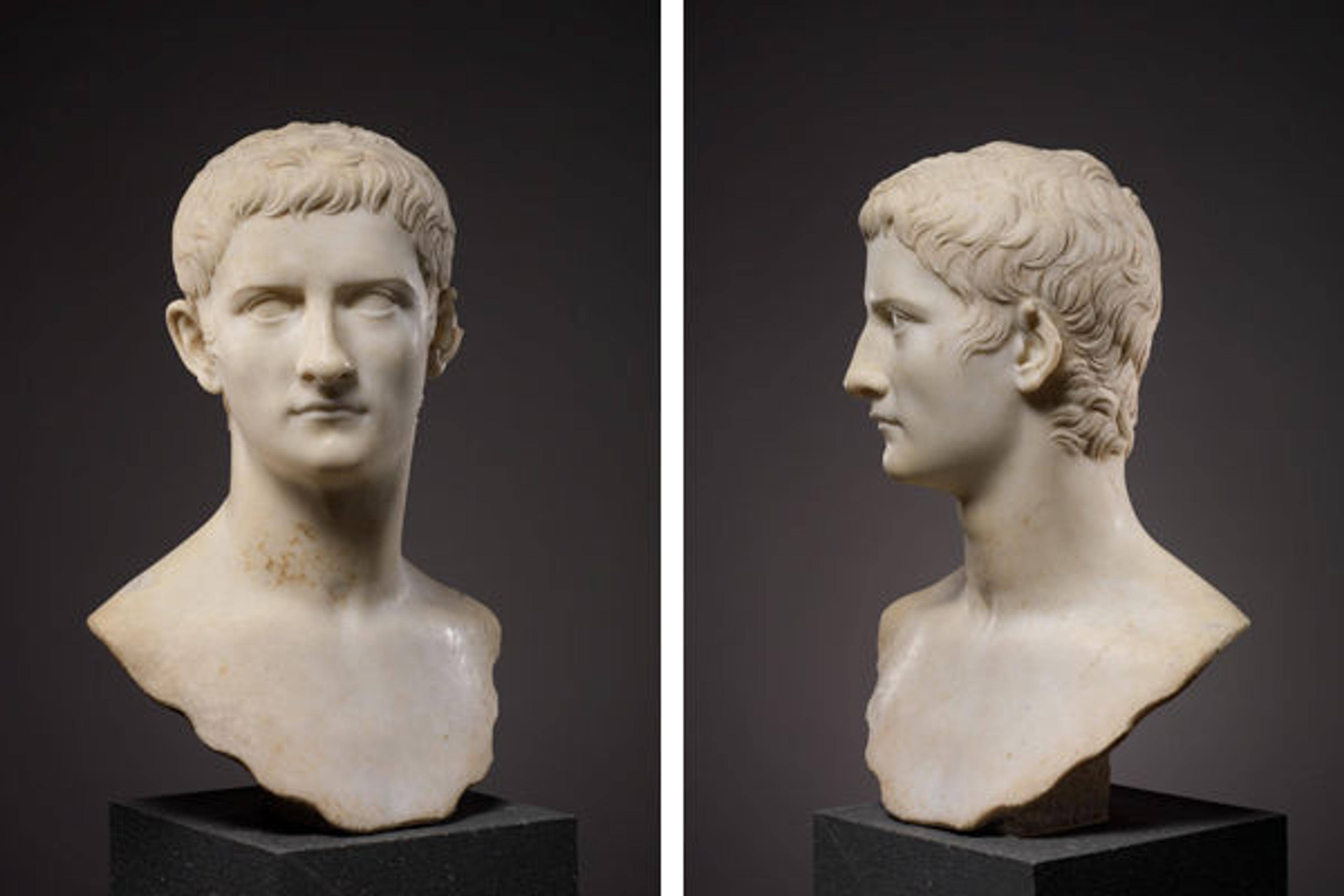Now on View: A Portrait Bust of Emperor Domitian

Bronze portrait bust of a young boy, ca. A.D. 50–68. Roman, early Imperial, Julio-Claudian. Bronze, silver; H. 11 1/2 in. (29.2 cm). The Metropolitan Museum of Art, New York, Funds from various donors, 1966 (66.11.5)
«In June, the Department of Greek and Roman Art's fine bronze portrait bust of an aristocratic Roman boy goes on display in The Toledo Museum of Art in Toledo, Ohio. The sculpture, originally affixed to a herm of wood or stone, was made by a gifted craftsman who endowed it with great presence. The boy's identity is unknown since no inscription is preserved, but the high quality of the sculpture has often led to the suggestion that he represents the emperor Nero as a child. Since Nero was already thirteen years old in A.D. 50—when he was adopted by his great uncle and stepfather, the emperor Claudius—it seems unlikely that he is, in fact, the person portrayed here. Nevertheless, the style of the bust is very much in keeping with late Julio-Claudian portraiture.»
In exchange, the Toledo Museum has lent to the Metropolitan Museum one of its finest Roman marble sculptures—a portrait bust of the emperor Domitian (r. A.D. 81–96), the third and final member of the Flavian dynasty of Roman emperors, the younger son of Vespasian (r. A.D. 69–79) and brother of Titus (r. A.D. 79–81). Unlike his father and brother, Domitian was not regarded as a popular ruler and suffered damnatio memoriae after his assassination. Nevertheless, several marble portraits of Domitian survive, of which the Toledo example is arguably the best.

Portrait bust of Emperor Domitian, ca. 90 CE. Ancient Rome, from Italy. Parian marble; H: 23 7/16 in. (59.5 cm); W: 15 7/8 in. (40.3). The Toledo Museum of Art, Toledo, Ohio (1990.30)
This realistic portrait expresses something of the absolute power that Domitian wielded over the entire Roman world, but it also depicts personal characteristics—notably that he wears a wig that concealed his baldness in later life, as he is shown here to be about forty years old. According to Suetonius, Domitian was the first emperor to assume the titles dominus et deus (lord and divinity) and to insist on subservience from senators, officials, and citizens alike. It was his self-aggrandizement and authoritarianism that not only earned him his reputation for greed, debauchery, and cruelty, but also led ultimately to his death at the hands of his own courtiers.
The portrait of Domitian is displayed in the Roman Sculpture Court (gallery 162), where he can be viewed together with another "bad boy" emperor, Gaius (r. A.D. 37–41), also known as Caligula.

Marble portrait bust of the emperor Gaius, known as Caligula, A.D. 37–41. Roman, early Imperial, Julio-Claudian. Marble: H. 20 in. (50.8 cm); L. 7 1/16 in. (18 cm). The Metropolitan Museum of Art, New York, Rogers Fund, 1914 (14.37)
The loan exchange will last for one year, and is just one of the many loans that the Department of Greek and Roman Art extends to other institutions each year. In this case, however, it has provided visitors both at the Met and in Toledo the opportunity to see different examples of high-class Roman portraiture.
Christopher Lightfoot
Christopher S. Lightfoot is a curator in the Department of Greek and Roman Art.